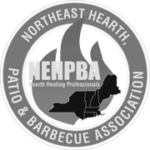Chimney Repairs
With over 30 years of experience in the chimney repairs and service industry, Don’s Stove Chimney & Stove can solve any chimney related problem that you have.We specialize in chimney repairs in both interior and exterior settings, from caps and crowns to flues and fire boxes. We also specialize in water sealing and flashing repairs to ensure that your chimney is completely weatherproof all year round.
If you have old flue tile that continues to give you trouble, we can remove the tile from your flu without affecting the integrity or performance of your chimney or fireplace. If you are in need of repairs to your hearth, we can help.
As with every part of your home, it is important to address the maintenance of your chimney and fireplace in a timely manner. Delaying repairs can lead to further problems and more costly chimney repairs later, while fixing the problems ensure safety and greater heating efficiency for your home. Call oremail us today to discuss your particular repair needs.
Class A Chimney
What is a Class A Chimney?
“Class A chimney” is a complete chimney system that does not require any masonry. It is an independent unit and is designed for residential use and can be installed on the exterior or the interior (the preferred location) of the home. It is insulated with one inch of insulation and designed to vent almost any fuel.
If you need a new chimney, a double wall Class A chimney may be an excellent alternative to a masonry chimney.
What Do I Need?
We’ve had many customers ask us for stove pipe and after talking to them, we have found what they really wanted was chimney. Stovepipe connects the appliance to the ceiling or wall where the Class A chimney is installed. You need the insulating power of Class-A stainless steel chimney to go through the wall or ceiling all the way up past the roof (preferred location). Besides it being to code, it is the safest thing to do.
Please review the following link for great information about why the chimney should stay within the home. (click here)
Always keep in mind that all codes are set up for you to be safe in a “worse case scenario”. Worse case scenario for a chimney is a chimney fire. That single wall pipe turns cherry red during a chimney fire that burns around 2000 – 2500degrees F. Anything combustible within 16 inches of that glowing red single wall pipe can catch on fire, which would be your house.
Using single wall pipe also increases the chance for chimney fire because it collects much more creosote than does an insulated chimney. The colder the chimney, the slower the draft, which creates a build up of creosote) on the inside of the chimney. You may think that using single wall pipe is a cheaper alternative, but as many have found out, losing your home, or even a family member, due to using single wall pipe is a lot more expensive than purchasing the right type of chimney in the first place.
Even though Uncle Joe has been burning his stove like that for years, sticking a single wall pipe out of a window and up to the roof is very dangerous. Codes call for an 18″ clearance to combustibles for single wall pipe, and for good reason. Even though that single wall pipe may work fine for a while, there is a huge potential for the unthinkable to happen which is why the clearances need to be met and why they are in the code books.
Most all… Class-A stainless steel chimneys have clearances down to 2″ to combustibles. Which means that even during a chimney fire, combustibles that are 2″ or more away from the chimney will be safe. Check out our Typical Chimney Installation Diagrams to get an idea how Class-A chimney is installed. We use Excel Class A chimney (http://icc-chimney.com/en/excel#mc ) which has a clearance of 1”.
Quite a few of us handymen use alternate less expensive solutions for maintenance projects around the home to some degree; some put tar on a roof instead of replacing a shingle, caulk a bad angle in some molding we installed, etc. But when it comes to venting an appliance which can be very dangerous, we need to stick to code. It is not something to skimp on.
What Does it Cost?
Interested in what it may cost to have a Class A chimney installed in your home? Stop by or give us a call today. If you are a DO-IT-YOURSELFER then use the following link to figure what components you’ll need to purchase.
http://icc-chimney.com/en/configuration-tool
Chimney Inspections
A chimney is the vehicle that carries away toxic and dangerous flue gases out of your fireplace, wood stove, or furnace. It’s what helps your fireplace remain efficient, all while keeping the air inside your home breathable. If not properly maintained – the unthinkable could happen! A properly operating chimney is crucial to the safety of your family and your home.
Masonry chimneys are designed to contain a chimney fire in order to keep it from spreading to the rest of the home, that is– if it is constructed properly with the right clearances. However, once a chimney has been damaged, often with internal damages that are not readily accessible, a second chimney fire is more likely to escape the masonry structure due to gaps created by cracks in mortar and bricks which is why it is so important to have a chimney inspection.
Every year hundreds of houses burn down because of dirty chimneys. At fault in most all chimney fires – accumulated creosote – which is the highly flammable substance that builds up inside your chimney or liner as a byproduct of burning wood. Creosote can accumulate more quickly if you practice poor burning practices or if you have a burning appliance or stove that’s not working well or connected properly. Chimney fires are notorious for being terribly destructive and can quickly engulf a house, especially if the culprit is the highly-flammable creosote buildup inside of a neglected chimney like it most often is. However, not all chimney fires are immediately obvious.
SOME REALLY GOOD REASONS WHY YOU SHOULD HAVE YOUR CHIMNEY INSPECTED AND/OR SWEPT
- A chimney that hasn’t been maintained is a fire hazard!!!!. Chimneys that have been neglected too long often have a substance called creosote built up in them. This substance is a byproduct of burning wood which is highly flammable and dangerous.
- Gaps in the liner can allow toxic heated flue gases to escape the confines of the flue to the interior chimney or combustible wood framing which could result in carbon monoxide poisoning and/or a fire.
- A dirty chimney can allow deadly carbon monoxide to penetrate through your unlined or deteriorating chimney and into your living space.
- A leaking chimney can cause major structural damage to your home. Putting off this repair only makes the damage worse and more expensive.
- A dirty chimney can produce a bad smoky odor that permeates your home. The summer heat can intensify that smell which is why it is best to sweep your chimney in the Spring or as soon as your burn season is over.
- A chimney or stove that hasn’t been professionally installed may not be hooked up properly or equipped with the proper flue size which could result in the appliance not operating at peak efficiency or, even more importantly, may not be venting safely!
We recommend that homeowners have their chimney inspected annually by a certified chimney professional as a means of prevention to determine whether or not it needs sweeping, repairing, or if there are any other pressing issues (unlined chimney, cracked flue tiles, etc). If you use your fireplace or plan on doing so, if you’ve just moved into a new home, or if you have never had your chimney inspected then don’t wait any longer. Contact us today to schedule an appointment to have it inspected and/or swept to make sure that it is safe and working well. A chimney inspection is a simple process and can be infinitely more valuable to you in the long run knowing that your chimney is safe and secure.
Maine’s fire safety code utilizes three levels of chimney inspection which were adopted into code by the NFPA (National Fire Protection Association) that are carried out by certified chimney professionals:
- LEVEL 1 INSPECTION – is the most basic type of chimney inspection, a Level 1 inspection is suggested if you haven’t changed anything about your appliance or the way you use it, and if you’ve been sticking to an annual sweeping schedule. A certified chimney technician will examine the readily-accessible parts of your chimney, inside and out, and will check to make sure your chimney doesn’t have any blockages or combustible deposits and that your chimney and flue are of sound structure and installed and connected correctly.
- LEVEL 2 INSPECTION -is the most common inspection. Level 2 inspections are required when you make any kind of change to your heating appliance – changing your fuel type, having the chimney relined or adding a different type of appliance with a different input rating or efficiency. These are also recommended upon the sale or transfer of a property, after damaging weather or a fire. This inspection comprises everything in a Level 1 inspection in addition to portions of the attics, crawl spaces, and basements. This inspection will also address proper clearances from combustibles in accessible locations.
- LEVEL 3 INSPECTION -involves gaining access (removing parts of the building and/or chimney) to hidden areas in the home that may be obstructed by other building elements. Level 3 inspections generally only take place after a chimney has been damaged or there is evidence of serious hazards resulting from the chimney.
HOW DO I KNOW IF MY CHIMNEY NEEDS TO BE INSPECTED?
- 1. If you are not sure if it is currently being swept by a chimney sweep who abides the by codes of the
NFPA 211. - 2. You are not sure that is is 100% safe to use.
- 3. You can’t remember the last time, if ever, your chimney was inspected.
- 4. There’s creosote build-up on your damper or any other part of your chimney that is at least 1/4″
thick. - 5. You open your damper and soot tumbles down.
- 6. There’s a strong odor coming from your fireplace/chimney.
- 7. You have just moved into a new home (even though a home inspection was performed).
SCHEDULE AN APPOINTMENT TODAY
SIGNS THAT YOU MIGHT BE HAVING A CHIMNEY FIRE
- A LOUD CRACKING AND POPPING NOISE CAN BE HEARD
- DENSE SMOKE
- AN INTENSE BURNING SMELL
CLEAN CHIMNEYS DON’T CATCH FIRE!!! FIRES CAUSED BY DIRTY CHIMNEYS ARE FIRES THAT COULD HAVE BEEN PREVENTED!!!
Don’t wait another day to contact us if you have not had your chimney professionally inspected (even if you only use your hearth every so often). An inspection by one of our certified chimney professionals will give you a thorough understanding of the condition that your chimney is in, assess and review any potential dangers it poses, and recommend services to improve the safety and efficiency of your chimney – not only for the present but for the future as well. Schedule an inspection today. If problems are discovered, Don’s Chimney Care can repair or restore your chimney to safe operating condition with skill and dependability.
Chimney Sweeping
CHIMNEY SWEEPING
You may not realize how important it is for your home to have an annual chimney sweep/inspection. The construction of masonry chimneys should conform to proportions and standard building practices per the NFPA 211 Standards and International Residential Code. If a chimney isn’t built or maintained correctly, it may not work properly, and may even be a fire and Carbon Monoxide hazard. Although masonry chimneys are carefully designed to contain a chimney fire in order to keep it from spreading to the rest of the home, they are also the source of a deadly buildup of a highly flammable substance called creosote. This substance, if it builds up in sufficient quantities, can cause an extremely destructive chimney fire. The only way to prevent this from happening is an extensive chimney sweep.
For safety’s sake be sure to have your chimney swept/inspected once a year to prevent CO poisoning or fires resulting from creosote.
The job of the chimney sweep is to remove soot, blockages and built-up creosote from your chimney liner, firebox, smoke chamber and damper as well as perform an inspection. This cleaning will help create a safer operation of your system during the heating system. It takes only a small accumulation of creosote glazing to create the potential for chimney fires which are all too common and often go unnoticed by the homeowner at the time of the event. Once a chimney has been damaged, often with internal damages that are not readily accessible, a second chimney fire is more likely to escape the masonry structure due to gaps created by cracks in mortar and bricks. IF YOU SUSPECT THAT YOU MAY HAVE HAD A CHIMNEY FIRE – DO NOT CONTINUE TO USE THE CHIMNEY – YOU COULD BE PUTTING YOUR FAMILY AND HOME IN HARMS WAY!! Contact us immediately for an inspection!
SOME REASONS FOR CREOSOTE BUILD UP:
- Flues too large for the burning appliance
- Poor burning practices (not burning hot enough)
- Green (unseasoned) vs. seasoned wood
- Type of wood (pine/soft wood vs. hard wood)
Every year hundreds of houses burn down because of dirty chimneys. At fault in most all chimney fires – accumulated CREOSOTE – which is the HIGHLY-FLAMMABLE substance that builds up inside your chimney or liner as a byproduct of burning wood. Creosote can accumulate more quickly if you practice poor burning practices or if you have a burning appliance or stove that’s not working well or connected properly. Chimney fires are notorious for being terribly destructive and can quickly engulf a home, especially if the culprit is the highly-flammable creosote buildup inside of a neglected chimney like it most often is. However, not all chimney fires are immediately obvious. And even more dangerous than a chimney fire is carbon monoxide poisoning. Every year tens of thousands of cases of carbon monoxide (CO) poisoning are reported, and tens of thousands more go unreported. CO poisoning kills hundreds every year and costs billions in sickness and lost productivity. Heating appliances – gas, oil and wood alike – are big contributors to those statistics. A blocked or poorly vented gas flue won’t catch fire, but it may kill you anyway. Don’t keep putting off that chimney inspection/sweep- call Don’s Chimney Care today to schedule an appointment.
ABOUT OUR SERVICE
First and foremost, the lead technician that we send to your home is a trained and certified chimney sweep who will be easily identified as an employee of Don’s Stove Shop & Chimney Care by the vehicle they drive and the shirts they wear. They will be professional, friendly & courteous and can provide you with an industry ID if requested. We will not sweep your chimney if it does not need it. However, an inspection is part of a chimney sweep so the fee for the inspection will still be assessed. There are several companies that will perform unnecessary services and charge the customers for those services- WE ARE NOT ONE OF THOSE COMPANIES!!!
Don’s Stove Shop Policy – WE WILL NEVER CHARGE FOR A SERVICE THAT IS NOT PERFORMED. WE WILL NEVER BILL FOR A PART THAT IS NOT USED. NEVER!! We want to reciprocate the trust that you have placed in us, therefore, If you ever have any questions or concerns about your bill (or anything else for that matter) – Don would like you to bring it to his attention immediately so that he can explain or correct the mistake.
HOW DO WE SWEEP YOUR CHIMNEY?
We lay down drop cloths in front of the hearth and we use vacuums to ensure that your home remains dust free and clean as we work on sweeping the inside of your chimney. We use a chimney brush on the end of chimney rods to brush your flu, either from the hearth or the roof, depending on the job. After sweeping the flue, the chimney sweep will inspect the interior of the flue for missing mortar joints, cracks in flue tiles, open gaps, deteriorating liner surfaces, interior firebox components as well as the damper and smoke chamber (if it is a fireplace). We go to the roof to inspect your crown, cap, flashing and mortar joints as well as remove and dispose of any/all debris collected from the sweep. When this is all done, we give you a written chimney condition report. If damages are found during inspection the sweep will recommend a proper repair method. Remember, all of our chimney technicians are certified to ensure the highest level of quality and professionalism.
SCHEDULE A SWEEP TODAY
Chimney Lining/Relining
The two biggest dangers of chimneys that are not maintained are carbon monoxide poisoning and chimney fires which is why maintaining your chimney by a professional is more important than you may realize. Fact is, your chimney will wear out over time but the true condition and safety of your chimney is NOT what you see on the outside; it’s what the condition is on the inside.
Chimney damage in Maine can take place for a number of reasons including severe weather, settling foundations, chimney fires and deterioration. Whether you heat your home with oil, gas, wood or coal, over time each of these fuels can create combinations of condensation, acidic build up and creosote, all of which will deteriorate the clay flue tiles and mortar inside the chimney. The consequences of cracks formed by a chimney fire or deterioration, if left unattended, are deadly carbon monoxide gases escaping into your home or a second chimney fire that could engulf your home. Not having your chimney inspected poses a serious risk to the safety or your home and family.
A stainless steel liner is the safest most cost-effective solution to restore a damaged or compromised chimney interior back into a safe functioning and efficient venting system that will last for the life of your home. We only install liners that are built from the finest quality stainless steel and titanium alloy. These airtight watertight liners stand up to extreme heat and the acidic moisture that forms inside of your chimney while containing the gases to keep them from entering your home. Should a chimney fire ever occur in your wood-burning system, our liners will contain the deadly flames and greatly reduce the risk of the fire spreading into your home.
Chimney liners can prevent the buildup of creosote in your fire place and chimney flue. Creosote build up can lead to chimney fires, which can weaken your chimney and in worst cases set fire to your home. Many old chimneys were built without liners, and other chimneys which included liners have since been worn down and are in need of replacement. Chimney liners are also an effective way to resize chimneys for use with new heating appliances.
Stainless steel chimney liners can be either rigid or flexible, depending on the application. We use the highest quality stainless steel liners, certified by Underwriters Laboratories, in all of our chimneys. This ensures the highest quality application of liner into your chimney, whether it is for wood, pellet, or furnace heat.
If the furnace guy said you need a new liner, you are installing a new furnace, your local sweep said it needs to be relined or you haven’t had your chimney inspected the give us a call at (207)897-4200. We are your Maine Chimney Liner Pros and have been keeping Maine families safe and protecting homes for over 30 years. We will scan your chimney with a camera to identify any issues and give you our recommendations on which liner will best fit. Call us today at (207)897-4200 and talk with Don about your chimney concerns.
Call or email us today to find out how a stainless steel chimney liner can help improve the safety and efficiency of your home heating needs.

